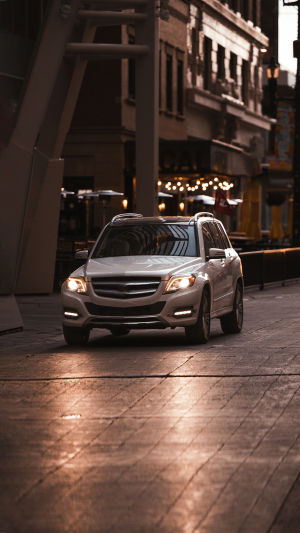Driving at night presents unique challenges that require drivers to exercise extra caution.
While many drivers are aware of the basic safety measures—such as turning off interior lights to avoid glare—fewer understand the underlying reasons for these precautions.
Here, Lykkers, We will delve into why it's crucial to turn off car interior lights at night and will provide a comprehensive guide on other important safety considerations for nighttime driving.
<h3>The Impact of Interior Lights on Nighttime Driving</h3>
The practice of turning off interior lights while driving at night is grounded in fundamental principles of optics, specifically mirror imaging. When driving after dark, the light inside the vehicle often appears much brighter than the ambient light outside. This discrepancy in lighting can cause the windshield to act like a mirror, reflecting interior light and creating visual interference.
This mirror effect on the windshield can severely hamper a driver's ability to see the road. When the windshield reflects the bright interior light, it reduces the driver's visibility of the road ahead and increases the risk of missing important visual cues, such as road signs, obstacles, or other vehicles.
Consequently, turning off the interior lights minimizes this interference, allowing drivers to focus more effectively on the road conditions and enhance overall driving safety.
<h3>Additional Nighttime Driving Precautions</h3>
In addition to turning off interior lights, several other key precautions can help ensure a safer driving experience at night:
<b>1. Avoid Using High Beams:</b> One common mistake that drivers make at night is the misuse of high beams. High beams are designed to provide greater illumination in dark conditions, but when used improperly, they can create severe glare for other drivers.
This glare can be both distracting and dangerous, leading to a significant increase in nighttime accidents. Statistics indicate that approximately 30% of nighttime traffic accidents are related to improper use of high beams.
To mitigate this risk, drivers should use high beams judiciously, switching to low beams when driving in well-lit urban areas or when approaching other vehicles. Adjusting the rearview mirror to reduce glare can also be beneficial.
<b>2. Control Your Speed:</b> Nighttime driving often involves reduced traffic and fewer pedestrians, which might tempt drivers to increase their speed. However, nighttime road conditions—such as curves, ramps, bridges, and narrow lanes—are less visible and more challenging to navigate.
To counteract these hazards, drivers should adhere to posted speed limits and exercise additional caution, especially in adverse weather conditions like rain or snow. Reducing speed helps maintain control and provides more time to react to unexpected obstacles or changes in road conditions.
<b>3. Ensure Proper Vehicle Maintenance:</b> The functionality of vehicle lighting systems is critical for nighttime driving. Headlights, brake lights, fog lights, and turn signals must be in optimal working condition to ensure visibility and communication with other drivers.
Regularly inspecting and maintaining these lights helps prevent accidents caused by insufficient illumination. In addition, ensure that all vehicle systems, such as windshield wipers and defrosters, are operational to handle varying nighttime weather conditions.
<b>4. Maintain Vigilant Driving Habits:</b> Maintaining a clear and focused state of mind is crucial when driving at night. Distractions such as using a mobile phone, eating, or engaging in other activities can impair a driver's concentration and reaction times.
To avoid distractions, drivers should keep their attention solely on the road and avoid multitasking. Additionally, maintaining a safe distance from the vehicle ahead ensures that there is ample time to react to sudden stops or emergencies.
Nighttime driving requires careful consideration and adherence to safety measures to reduce risks and ensure a safe journey. By following these guidelines, drivers can navigate the darkness with confidence and reach their destinations safely.





